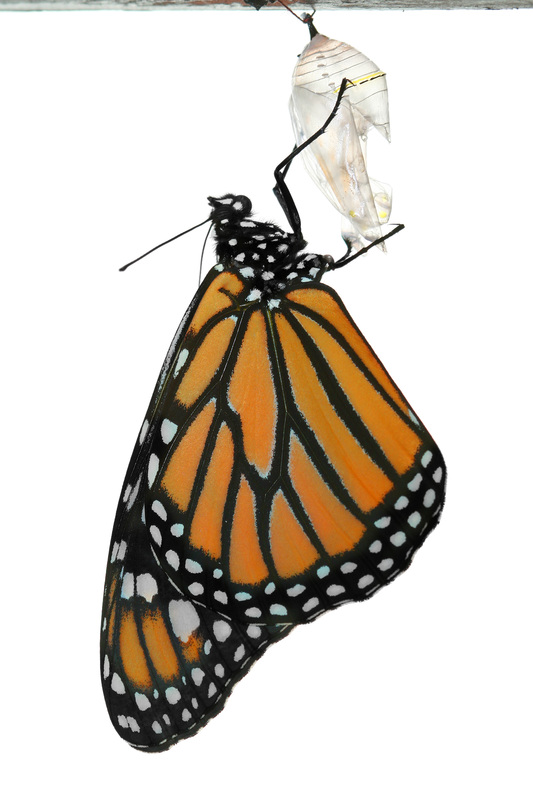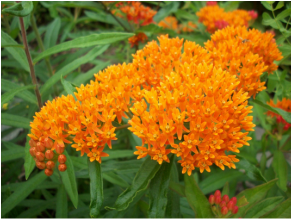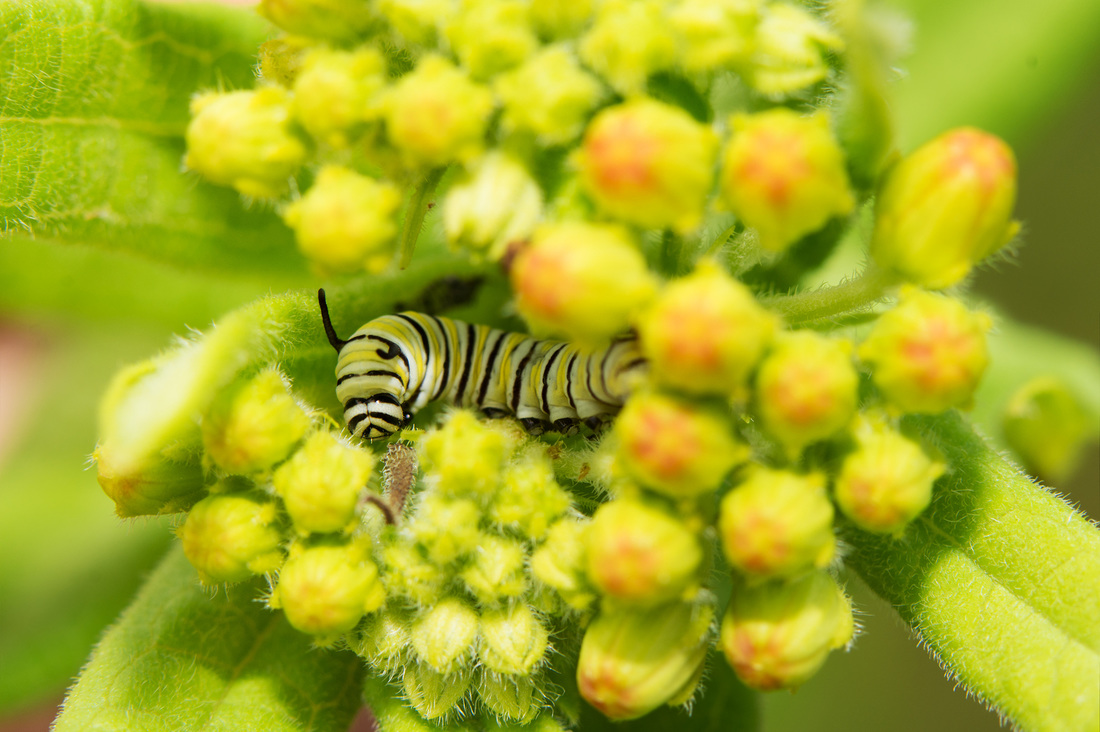|
Post by: Jonathan Léger
Prepare Your Milkweed for the Monarchs Arrival
The word is out that the population of Monarch butterflies is decreasing. These insects have delighted legions of children on the North American continent for generations and the thought of their demise is distressing to many. Since the caterpillars require milkweed to thrive, residents of cities, suburbs, and rural areas are concentrating their efforts on propagating the species to ensure the survival of this wondrous species. If you have never grown milkweed before, here are some tips that will help your plants grow to be strong and healthy to nurture the Monarch caterpillars long enough for them to reach their butterfly adulthood.
Prepare a garden space that will accommodate at least six plants. When Monarch caterpillars start eating, they are very, very hungry. By giving them access to multiple plants, you create a better opportunity for more of them to survive to adulthood and, after all, isn't that the whole point of growing milkweed in the first place?
Diversify Your Milkweed Garden
To really increase your odds of successfully creating a habitat for these lovely butterflies, begin preparing more than one garden plot for them in the spring. Keep in mind that not every plant thrives, so if you grow your milkweed in multiple locations around your yard, you will increase your odds of success. Even if a storm blows through your area, it might destroy one of your milkweed patches, but it won't destroy your chances.
If you do choose to grow your milkweed in a container garden, you can overwinter them and place them back outside in the springtime for bigger plants that season. Overwintering works for most milkweed varieties, but not all. Move them indoors once they have stopped producing flowers or fruits. Once indoors, remember that they will still need to be watered all winter long. Perennial milkweed will go dormant in the winter and can remain potted outdoors throughout the winter.
Plan Ahead for Next Seasons Monarchs
After you have placed your plants into the soil, remember to put mulch around them. The protective layer of mulch will help to keep moisture in and help your plants to thrive. Leave some open space around the seedlings and check on them after a rain storm to make sure they don't get covered. You can buy a commercial mulch specially made for this purpose or you can use grass clippings. Both work very well.
Once you begin growing your milkweed plants, you can either wait for wild milkweed butterflies to show up to lay their eggs or collect caterpillars from nearby milkweed and place them on your plants. Watching these caterpillars grow to adulthood makes it worth all the work in the spring.
Jonathan Leger is a member of the Garden Writer's Association and a gardening enthusiast.
He runs a site dedicated to the history, education and care of knockout roses at
0 Comments
Leave a Reply. |
Site SearchAuthorMake milkweed your friend. Your friends will love your milkweed. My name is Brad. Learn more about me now. Blog Archives
March 2022
Blog Categories
All
email Subscriber archive |
-
Home
- About
- Why Grow Milkweed Plants
- Contact
-
Map
>
-
USA
>
- Alabama
- Alaska
- Arizona
- Arkansas
- California
- Colorado
- Connecticut
- Delaware
- District of Columbia
- Florida
- Georgia
- Hawaii
- Idaho
- Illinois
- Indiana
- Iowa
- Kansas
- Kentucky
- Louisiana
- Maine
- Maryland
- Massachusetts
- Michigan
- Minnesota
- Mississippi
- Missouri
- Montana
- Nebraska
- Nevada
- New Hampshire
- New Jersey
- New Mexico
- New York
- North Carolina
- North Dakota
- Ohio
- Oklahoma
- Oregon
- Pennsylvania
- Rhode Island
- South Carolina
- South Dakota
- Tennessee
- Texas
- Utah
- Vermont
- Virginia
- Washington
- West Virginia
- Wisconsin
- Wyoming
- Canada >
- Mexico >
-
USA
>
- FAQ
-
Milkweed
- Aquatic milkweed, Asclepias perennis
- Arizona milkweed, Asclepias angustifolia
- Bear mountain milkweed, Asclepias scaposa
- Bract milkweed, Asclepias brachystephana
- Broadleaf milkweed, Asclepias latifolia
- Butterfly milkweed, Asclepias tuberosa
- California milkweed, Asclepias californica
- Carolina milkweed, Asclepias cinerea
- Clasping milkweed, Asclepias amplexicaulis
- Common milkweed, Asclepias syriaca
- Curtiss' milkweed, Asclepias curtissii
- Cutler's milkweed, Asclepias cutleri
- Desert milkweed, Asclepias erosa
- Dwarf milkweed, Asclepias involucrata
- Emory's milkweed, Asclepias emoryi
- Engelmann's milkweed, Asclepias engelmanniana
- Fewflower milkweed, Asclepias lanceolata
- Florida milkweed, Asclepias feayi
- Fourleaf milkweed, Asclepias quadrifolia
- Green antelopehorn, Asclepias viridis
- Green Comet milkweed, Asclepias viridiflora
- Greene's milkweed, Asclepias californica ssp. greenei
- Hall's milkweed, Asclepias hallii
- Heartleaf milkweed, Asclepias cordifolia
- Horsetail milkweed, Asclepias subverticillata
- Jewel milkweed, Asclepias cryptoceras
- Largeflower milkweed, Asclepias connivens
- Lemmon's milkweed, Asclepias lemmonii
- Longhood milkweed, Asclepias macrotis
- Longleaf milkweed, Asclepias longifolia
- Mahogany milkweed, Asclepias hypoleuca
- Mead's milkweed, Asclepias meadii
- Mexican whorled milkweed, Asclepias fascicularis
- Michaux's milkweed, Asclepias michauxii
- Mojave milkweed, Asclepias nyctaginifolia
- Nodding milkweed, Asclepias glaucescens
- Oval-leaf milkweed, Asclepias ovalifolia
- Parish's woolly milkweed, Asclepias vestita
- Pineland milkweed, Asclepias obovata
- Pineneedle milkweed, Asclepias linaria
- Pinewoods milkweed, Asclepias humistrata
- Plains milkweed, Asclepias pumila
- Poke milkweed, Asclepias exaltata
- Prairie milkweed, Asclepias sullivantii
- Prostrate milkweed, Asclepias prostrata
- Purple milkweed, Asclepias purpurascens
- Red milkweed, Asclepias rubra
- Redring milkweed, Asclepias variegata
- Rusby's milkweed, Asclepias rusbyi
- Rush milkweed, Asclepias subulata
- Ruth's milkweed, Asclepias uncialis
- Sand milkweed, Asclepias arenaria
- Savannah milkweed, Asclepias pedicellata
- Serpentine milkweed, Asclepias solanoana
- Showy milkweed, Asclepias speciosa
- Sidecluster milkweed, Asclepias lanuginosa
- Slim milkweed, Asclepias linearis
- Slimleaf milkweed, Asclepias stenophylla
- Slimpod milkweed, Asclepias quinquedentata
- Southern milkweed, Asclepias viridula
- Sperry's milkweed, Asclepias sperryi
- Spider milkweed, Asclepias asperula
- Swamp milkweed, Asclepias incarnata
- Swamp milkweed, Asclepias incarnata ssp. pulchra
- Tall green milkweed, Asclepias hirtella
- Texas milkweed, Asclepias texana
- Tuba milkweed, Asclepias tomentosa
- Tufted milkweed, Asclepias nummularia
- Utah milkweed, Asclepias labriformis
- Welsh's milkweed, Asclepias welshii
- Wheel milkweed, Asclepias uncialis
- Whitestem milkweed, Asclepias albicans
- Whorled milkweed, Asclepias verticillata
- Woolly milkweed, Asclepias vestita
- Woollypod milkweed, Asclepias eriocarpa
- Zizotes milkweed, Asclepias oenotheroides
- Store
- Podcast
- Blog
- Resources
-
Home
- About
- Why Grow Milkweed Plants
- Contact
-
Map
>
-
USA
>
- Alabama
- Alaska
- Arizona
- Arkansas
- California
- Colorado
- Connecticut
- Delaware
- District of Columbia
- Florida
- Georgia
- Hawaii
- Idaho
- Illinois
- Indiana
- Iowa
- Kansas
- Kentucky
- Louisiana
- Maine
- Maryland
- Massachusetts
- Michigan
- Minnesota
- Mississippi
- Missouri
- Montana
- Nebraska
- Nevada
- New Hampshire
- New Jersey
- New Mexico
- New York
- North Carolina
- North Dakota
- Ohio
- Oklahoma
- Oregon
- Pennsylvania
- Rhode Island
- South Carolina
- South Dakota
- Tennessee
- Texas
- Utah
- Vermont
- Virginia
- Washington
- West Virginia
- Wisconsin
- Wyoming
- Canada >
- Mexico >
-
USA
>
- FAQ
-
Milkweed
- Aquatic milkweed, Asclepias perennis
- Arizona milkweed, Asclepias angustifolia
- Bear mountain milkweed, Asclepias scaposa
- Bract milkweed, Asclepias brachystephana
- Broadleaf milkweed, Asclepias latifolia
- Butterfly milkweed, Asclepias tuberosa
- California milkweed, Asclepias californica
- Carolina milkweed, Asclepias cinerea
- Clasping milkweed, Asclepias amplexicaulis
- Common milkweed, Asclepias syriaca
- Curtiss' milkweed, Asclepias curtissii
- Cutler's milkweed, Asclepias cutleri
- Desert milkweed, Asclepias erosa
- Dwarf milkweed, Asclepias involucrata
- Emory's milkweed, Asclepias emoryi
- Engelmann's milkweed, Asclepias engelmanniana
- Fewflower milkweed, Asclepias lanceolata
- Florida milkweed, Asclepias feayi
- Fourleaf milkweed, Asclepias quadrifolia
- Green antelopehorn, Asclepias viridis
- Green Comet milkweed, Asclepias viridiflora
- Greene's milkweed, Asclepias californica ssp. greenei
- Hall's milkweed, Asclepias hallii
- Heartleaf milkweed, Asclepias cordifolia
- Horsetail milkweed, Asclepias subverticillata
- Jewel milkweed, Asclepias cryptoceras
- Largeflower milkweed, Asclepias connivens
- Lemmon's milkweed, Asclepias lemmonii
- Longhood milkweed, Asclepias macrotis
- Longleaf milkweed, Asclepias longifolia
- Mahogany milkweed, Asclepias hypoleuca
- Mead's milkweed, Asclepias meadii
- Mexican whorled milkweed, Asclepias fascicularis
- Michaux's milkweed, Asclepias michauxii
- Mojave milkweed, Asclepias nyctaginifolia
- Nodding milkweed, Asclepias glaucescens
- Oval-leaf milkweed, Asclepias ovalifolia
- Parish's woolly milkweed, Asclepias vestita
- Pineland milkweed, Asclepias obovata
- Pineneedle milkweed, Asclepias linaria
- Pinewoods milkweed, Asclepias humistrata
- Plains milkweed, Asclepias pumila
- Poke milkweed, Asclepias exaltata
- Prairie milkweed, Asclepias sullivantii
- Prostrate milkweed, Asclepias prostrata
- Purple milkweed, Asclepias purpurascens
- Red milkweed, Asclepias rubra
- Redring milkweed, Asclepias variegata
- Rusby's milkweed, Asclepias rusbyi
- Rush milkweed, Asclepias subulata
- Ruth's milkweed, Asclepias uncialis
- Sand milkweed, Asclepias arenaria
- Savannah milkweed, Asclepias pedicellata
- Serpentine milkweed, Asclepias solanoana
- Showy milkweed, Asclepias speciosa
- Sidecluster milkweed, Asclepias lanuginosa
- Slim milkweed, Asclepias linearis
- Slimleaf milkweed, Asclepias stenophylla
- Slimpod milkweed, Asclepias quinquedentata
- Southern milkweed, Asclepias viridula
- Sperry's milkweed, Asclepias sperryi
- Spider milkweed, Asclepias asperula
- Swamp milkweed, Asclepias incarnata
- Swamp milkweed, Asclepias incarnata ssp. pulchra
- Tall green milkweed, Asclepias hirtella
- Texas milkweed, Asclepias texana
- Tuba milkweed, Asclepias tomentosa
- Tufted milkweed, Asclepias nummularia
- Utah milkweed, Asclepias labriformis
- Welsh's milkweed, Asclepias welshii
- Wheel milkweed, Asclepias uncialis
- Whitestem milkweed, Asclepias albicans
- Whorled milkweed, Asclepias verticillata
- Woolly milkweed, Asclepias vestita
- Woollypod milkweed, Asclepias eriocarpa
- Zizotes milkweed, Asclepias oenotheroides
- Store
- Podcast
- Blog
- Resources




 Thank you,
Thank you,

